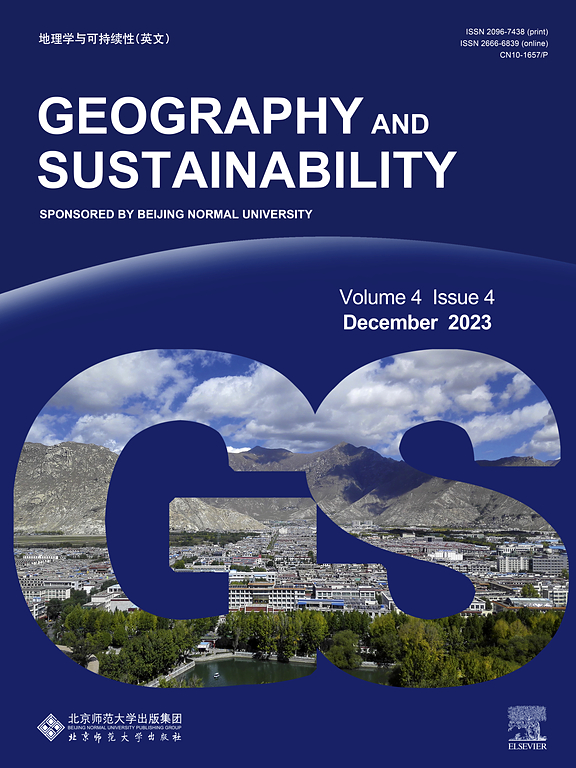Impact of town planning on direct residential CO2 emissions in rural China
IF 8
1区 环境科学与生态学
Q1 GEOGRAPHY, PHYSICAL
引用次数: 0
Abstract
China’s commitment to carbon neutrality by 2060 has made decarbonization a key principle for spatial planning (also referred to as urban/city/town planning). Although the mitigation effect of spatial planning in urban areas has been well documented, its significance in rural development has yet to be investigated. This paper addresses this research gap by empirically examining the influence of town planning on rural direct residential CO2 emissions (DRCEs) across 30 provinces in China. Based on various quantitative models, this study not only confirms the significant impact of town planning on rural DRCEs and the moderation effect of plan implementation capacity but also discloses that different dimensions of town planning have disparate roles in rural DRCE reduction. Additionally, regional variations in the mitigation effects of town planning on rural DRCEs were observed. The study also reveals spatial spillover effects, indicating that the influence of town planning on rural DRCEs extends beyond individual areas. Overall, China’s experiences demonstrate that well-managed town planning could play an essential role in low-carbon rural revitalization or, otherwise, it may augment rural DRCEs per capita. Consequently, governments should ascribe great importance to low-carbon town planning and allocate sufficient resources to towns, especially those in the central and western regions, so that they can afford professional planning consultation and adequate staffing in plan implementation. Moreover, governments should cooperate to promote knowledge sharing and transferring of low-carbon planning.

求助全文
约1分钟内获得全文
求助全文
来源期刊

Geography and Sustainability
Social Sciences-Geography, Planning and Development
CiteScore
16.70
自引率
3.10%
发文量
32
审稿时长
41 days
期刊介绍:
Geography and Sustainability serves as a central hub for interdisciplinary research and education aimed at promoting sustainable development from an integrated geography perspective. By bridging natural and human sciences, the journal fosters broader analysis and innovative thinking on global and regional sustainability issues.
Geography and Sustainability welcomes original, high-quality research articles, review articles, short communications, technical comments, perspective articles and editorials on the following themes:
Geographical Processes: Interactions with and between water, soil, atmosphere and the biosphere and their spatio-temporal variations;
Human-Environmental Systems: Interactions between humans and the environment, resilience of socio-ecological systems and vulnerability;
Ecosystem Services and Human Wellbeing: Ecosystem structure, processes, services and their linkages with human wellbeing;
Sustainable Development: Theory, practice and critical challenges in sustainable development.
 求助内容:
求助内容: 应助结果提醒方式:
应助结果提醒方式:


